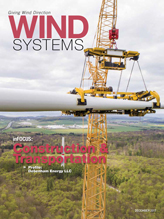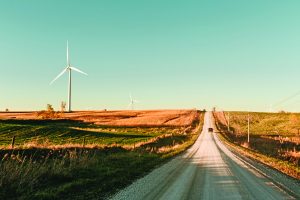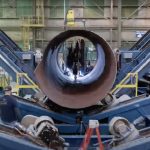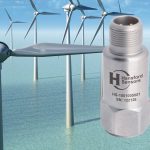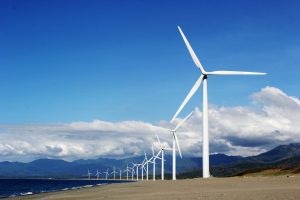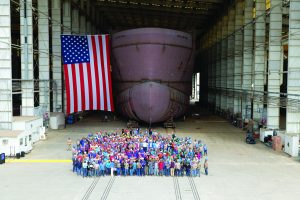With the installation of the first operational wind farm by Deepwater Wind off the coast of Rhode Island and the promise of the U.S. offshore wind market, there is a scramble to provide the assets necessary to transport and install offshore wind turbines.
The available assets in Europe may not be suitable for the 8- and 10-MW turbines being contemplated. Moreover they have to comply with the Jones Act. The Deepwater Wind project was handled by shuttle vessels transporting to the location where the installer vessel was stationed. This is expensive, ungainly, and not suitable for large-scale installations. The obvious solution is to look to the oil and gas sector for answers, which is ready and available, especially given the current state of affairs.
The Liftboat
The Wind Farm Installation Vessel’s (WTIV) mission closely resembles that of a liftboat. Liftboats have been the workhorse of the offshore oil and gas industry from their very inception in south Louisiana. They were literally boats on legs, hence the name. The U.S. Coast Guard still looks at them as boats.
Earlier liftboats were small, with limited ability to withstand offshore environments (70- and 100-knot winds). Over the years, they grew in size to where they are veritable Mobile Offshore Units (MOU’s). Owners have increasingly asked for their large liftboats to be MOU compliant or at the very least “MOU ready.” Some have even put drilling equipment onboard and become Mobile Offshore Drilling Units (MODU’s).

(Courtesy: A.K. Suda)
Offshore wind farm EPCI (Engineering Procurement Construction and Installation) companies need an agile platform that can carry heavy loads. The liftboat is the easiest fit. However, some significant changes have to be made:
Number of legs. Earlier liftboats were three-legged. They were wider than their four-legged descendants. The beam was close to the length. No serious attempt could be made at having a decent hull form. One of the first attempts made at some sort of a hull form was on the vessel now called the Al Ghweifat, in operation in the UAE. For the most part, liftboats were unwieldy and awkward. That was acceptable. Although they were self-propelled, they moved relatively infrequently. Three-leg vessels use ballast for preload. That makes the process longer.
WTIV’s move, on average, every two days or less. They have to be quick to deploy and quick to move. The four-legged option allows both in a complementary way. Four legs allow for quick preloading using the weight of the vessel, and the four legs allow for an opportunity to build in a hull form.
High Variable Dead Load (VDL). The oil and gas liftboats carried a maximum 2,000 tons of VDL; some a little higher. That VDL would be sufficient for only one of the modern wind turbines. Studies show a minimum four-turbine capacity is possible and ideal for the U.S. market given the port restrictions. For that, VDL has to increase more than three-fold. However, water depths and leg length are generally lower than those needed for oil exploration. That complements the high load. For example, the larger WTIVs would have leg lengths in the 300-foot range, whereas the largest liftboat has a leg length of 450 feet. (See photograph).
Efficient Hull Forms. European liftboats originated from jackups. They had relatively high depth at more than 20 feet and boxy hull forms. For a jackup, that was understandable, since jackups seldom moved (were towed). Over the years, hull form was added to meet the demands of the wind industry in particular. The spud cans were relatively small due to the hard soil, unlike the Gulf of Mexico.
Barge Hulls
Across the pond in the U.S., barge hulls were used by adding propulsion and legs. These were a little better for propulsion and maneuvering but not for carrying capacity. The smaller ones had large footings called pads instead of spud cans. These hung out of the hull like oars, further hurting the propulsion and steering characteristics of the vessel. Overall, these were not suited for efficient hull forms.
In order to get a WTIV hull form, it is necessary to have a high depth hull, which also works well for the higher carrying capacity.

Cranes. The traditional liftboat for the oil and gas industry rarely carried more than a 500T crane capacity. The booms are relatively short, about a 150- to 200-foot range. WTIVs require larger crane capacity in terms of load and reach.
The installation function of the operation requires heavy lifts, where heavy loads are in the 300- to 400-feet height. This makes for a large crane. The maintenance and repair functions do not require such high capacities but require long booms nonetheless.
Crane Capacity
The crane capacity requires multiple considerations. Turbine installation, maintenance, and repair (IMR) require the lowest capacity and longest reach, relatively. All the above activities yield about 50 percent vessel utilization in most cases. Financial considerations might require the design build in another activity for the vessel, which is foundation installation. This activity requires the highest load carrying but a relatively short reach. Crane selection envelope should include all these scenarios.
In the past, three-legged vessels with relatively long legs and short booms have been used with limited success for IMR. One example of such a vessel is the Titan II. It has two leg-encircling cranes, each 200 tons. The booms were 120 feet and 160 feet. The shorter one was used for the heavier items and the other for blades, etc. The high air gaps were the only concern, not to mention the time required to preload.

The Titan II could only carry one 3.6 MW turbine at a time.
The knowledge gained from the oil and gas industry can easily be employed to develop highly efficient wind-turbine installation vessels. The next generation of WTIVs promises to be a sea change from the technology being used to date.
Combining the mission-requirements experience gained from Europe with the engineering experience of the birthplace of liftboats worldwide is a reliable promise that this aspect of the industry is in good hands.
















